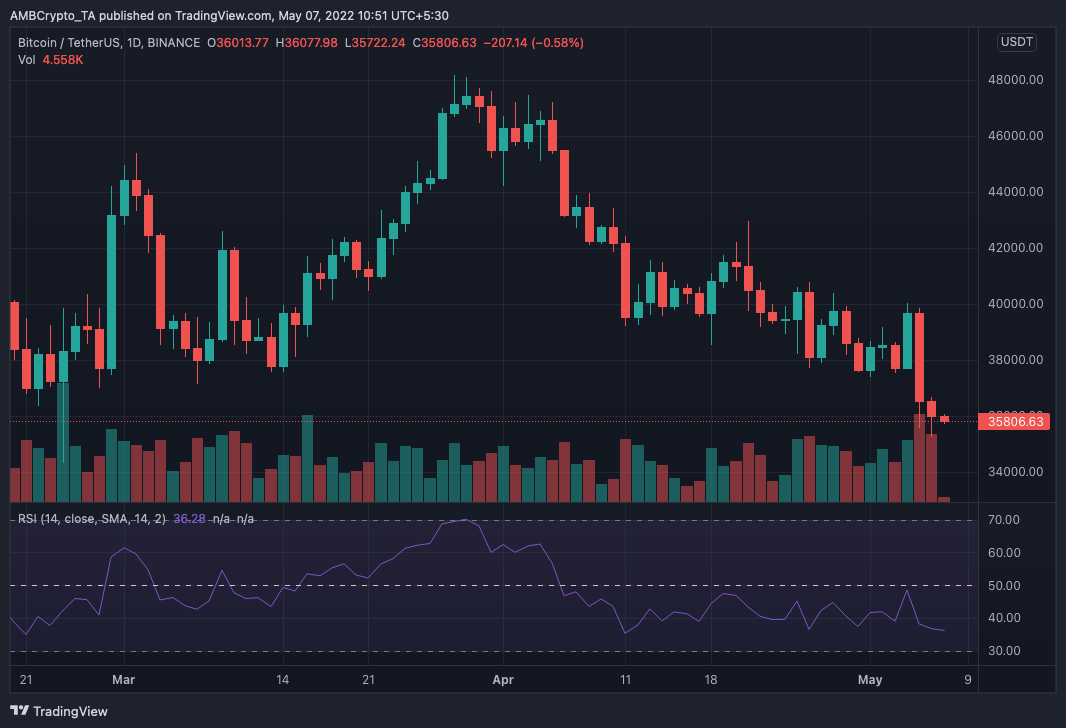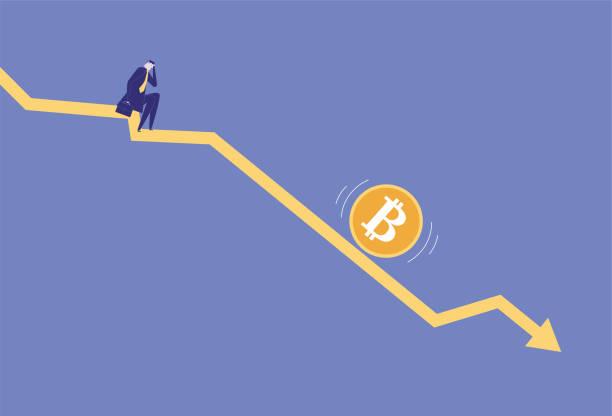At press time, Bitcoin (BTC) was trading in the red zone at $35,805, over 10% lower in the last 24-48 hours as per data from CoinGecko. The token has been experiencing a hard time since this is the fifth week that BTC has been trading in the negative.

BTC/USDT | Source: Tradingview
Of numbers and more…
As per data from Glassnode, the exchange netflow volume at the time of writing stood at 1,4992 BTC. A positive netflow means that the inflow has been more than the outflow, indicating increased liquidity in the market.
Glassnode further pointed out that the total BTC supply last active in five to seven years has gone up from approximately 660K as of 1 April to around 682K as of 6 May. A spike in this number further points in the direction of long-time HODLers releasing their holdings to cut down their losses with the anticipation that the market may fall even further.
Source: Glassnode
As per additional data from Glassnode, the number of spent outputs with a lifespan of three to six months further reached a monthly all-time high. The total spent output with a lifespan of three to six months on 3 May stood at 22,691 and soared to 35,981 at the time of writing.
Source: Glassnode
The MVRV ratio of the token further stood at 1.55 at press time. Since the BTC ratio is closer to the lower side of the 1-3.5 range, it depicts a strong indication of the token being in a bear market and further indicates that the token is being held at a loss at the moment. The current MVRV ratio also acts as a strong indicator of market capitulation.

Source: Glassnode
The “Bear” effect
The fall of the king token has not just impacted its stability as a safe investment but has also led to countries becoming skeptical about their ongoing investments in the token. For instance, the Central Bank of Argentina Republic (CBAR) announced that it has prohibited all banks in the country to offer crypto assets through the financial system due to its volatile and high-risk nature.
Furthermore, the International Monetary Fund (IMF) raised concerns related to the adoption of the token in El Salvador and the Central African Republic with regard to financial instability and major economic challenges.





